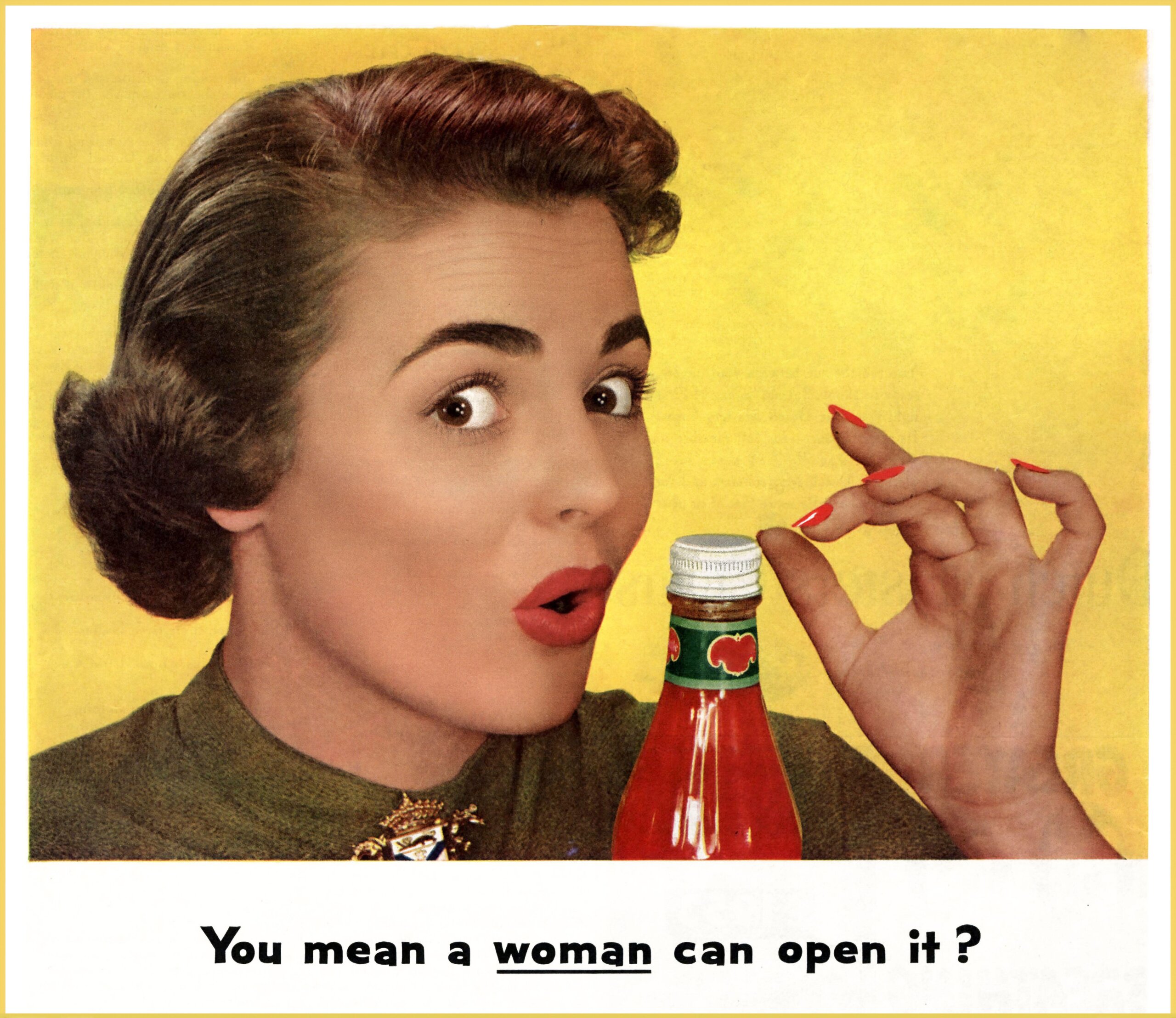Today, recent surveys paint a picture of significant progress in gender representation within the marketing industry. According to research undertaken by LinkedIn, women now dominate the industry, accounting for a staggering 60% of employees, a figure exceeding most other industries in North America. This upward trend extends to leadership roles, with women holding 59% of manager positions and 52% of Chief Marketing Officer (CMO) positions. This represents a notable climb from 47% in 2019, showcasing women in marketing shattering glass ceilings and earning their rightful place on executive boards.
The benefits of this progress extend beyond fairness and representation. Research by McKinsey & Company suggests that companies in the top quartile for gender diversity on executive teams are 21% more likely to outperform on profitability and 27% more likely to experience value creation.
However, despite these positive strides, challenges remain. While women are increasingly represented in leadership roles, only 13% of CMOs come from racially diverse backgrounds. Black women, in particular, face significant underrepresentation, with only 58 Black women advancing to managerial roles for every 100 men.
In this context, we sat down with Ruth Hall, Head of Marketing at Alamy, to gain her insights on this evolving landscape and the importance of fostering an inclusive environment.
2JWRHC0 // Eight Virgin Blue employees have been nominated for FHM Magazine's 100 Sexiest Women in the World 2002 survey.
1. From your experience, how has the marketing industry changed in terms of gender representation over the years?
Ruth: Looking back at my early career, the marketing industry was undeniably a male-dominated space. Women were often seen in more stereotypical roles, like event planning or public relations, while leadership positions were predominantly held by men.
This limited portrayal not only reinforced these stereotypes but also failed to connect with a significant portion of the market – women. Advertising campaigns often fell into predictable tropes, featuring women primarily as homemakers, objects of desire, or simply incapable of making their own decisions.
However, over the years, I’ve witnessed a significant shift. There’s a remarkable increase in the number of women entering marketing, and they’re no longer confined to specific roles. We’re seeing women thriving in every aspect of the industry, from data analytics and content creation to digital marketing and brand strategy. The statistics you mentioned are a testament to this progress, with women now forming a majority of marketing professionals and holding prominent leadership positions.
This increase in female leadership and diverse representation has translated into a marked change in how women are portrayed in advertising. We’re seeing:
1. A shift away from harmful stereotypes and towards more realistic portrayals of women as professionals, entrepreneurs, athletes, and individuals with diverse personalities and interests.
2. A wider range of body types, ethnicities, and ages represented in advertising campaigns, reflecting the true diversity of the female population.
3. Women taking centre stage in campaigns, driving the narrative and showcasing their capabilities and aspirations.
This improvement in representation is not just a matter of aesthetics; it’s about creating a more inclusive and authentic marketing landscape. It allows women to see themselves reflected in the stories they consume, fostering a sense of connection and empowerment. It also sends a powerful message that women are capable, valuable members of society, and their voices deserve to be heard.
While there’s still room for improvement, the progress we’ve seen in recent years is undeniable. As the marketing industry continues to embrace diversity and inclusion, we can expect to see even more powerful and authentic representations of women in advertising campaigns, paving the way for a more equitable future.
2PGMCT9
2. What factors do you think have contributed to this positive shift?
Ruth: Pinpointing a single definitive moment for the shift towards more women in marketing roles is challenging. However, several key historical periods and trends contributed to the gradual increase in female representation:
1. Early 20th Century:
Rise of consumer culture: With the growth of consumer culture and advertising agencies in the early 20th century, women began entering the field, often in roles focused on domestic products and female-oriented markets. While facing limitations, this marked the initial entry of women into marketing professions.
Pioneering women: Clara Cahill Green, Helen Lansdowne Resor, and agencies like Ruthrauff & Ryan were among the early female marketing leaders who paved the way for future generations.
2. Mid-20th Century:
Women in the workforce: The Second World War led to a shift in societal norms as women entered the workforce in large numbers. This trend continued after the war, leading to increased female participation in marketing beyond traditionally “feminine” products.
Shifting consumer demographics: As women gained more economic power and purchasing independence, marketing strategies began to account for their voices and preferences, further opening up opportunities for women in the field.
3. Late 20th and Early 21st Century:
Second-wave feminism: The feminist movement in the latter half of the 20th century challenged societal biases and advocated for equal opportunities for women, including in traditionally male-dominated fields like marketing.
Rise of knowledge work: The shift towards a knowledge-based economy opened doors for women in various fields, including marketing, where skills and education held greater weight than physical strength or traditionally gendered traits.
4. Recent Developments:
Focus on diversity and inclusion: In recent years, there has been a growing awareness of the importance of diversity and inclusion in the workplace. This focus has also led to increased efforts to recruit, retain, and promote women in leadership positions within marketing.
Data and statistics: Research highlighting the positive impact of diversity on business performance further strengthens the case for gender equality in marketing teams.
It’s not like these trends popped up overnight. They were shaped by what was happening in society, the economy, and even different cultures, all depending on the time and place. Even though we can’t pinpoint an exact date, looking at history shows us how women in marketing have slowly but surely made major strides over the past century.
FE06MT
3. Despite the progress, there are still challenges. What are some areas where further improvement is needed?
Ruth: While the overall representation of women is increasing, we still need to address critical issues:
1. Underrepresentation of diverse backgrounds: The data you mentioned regarding Black women holding leadership positions is alarming. We need to actively work towards dismantling systemic barriers and creating opportunities for women from all backgrounds to thrive in the industry.
2. Pay disparity: Unfortunately, a gender pay gap still exists in marketing, with women on average earning less than their male counterparts for the same work. We need to ensure fair and equal compensation for all marketing professionals, regardless of gender.
4. Alamy has a strong reputation for diversity and inclusion, with impressive representation of women in leadership roles. Did this factor into your decision to join the company?
Ruth: Absolutely. As a woman in marketing, I’ve always been passionate about working for an organisation that champions diversity and inclusion. Alamy’s commitment to fostering an environment where everyone feels valued and respected resonated deeply with me. Seeing women well-represented across the company, particularly in leadership positions, was a strong indicator of Alamy’s commitment to progress. It made me eager to be a part of an organisation leading the way in the industry.
2K8JR38
4. What can be done to further empower women in the marketing industry?
Ruth: Here are some key steps:
1. Implement concrete D&I strategies: Companies need to move beyond simply hiring women and actively foster a culture of inclusion where everyone feels valued and respected. This includes unconscious bias training, transparent promotion processes, and flexible work arrangements to accommodate diverse needs.
2. Support and promote organisations empowering women: These organizations play a vital role in providing resources, mentorship, and networking opportunities for women at all career stages. Companies can actively collaborate with these organizations and encourage employee participation in their initiatives.
3. Advocate for mentorship programs: Mentorship programs can be incredibly beneficial for young women entering the industry. Senior women can provide guidance, support, and career advice, helping younger women navigate challenges and achieve their goals.
Looking back on your career, what advice would you give to your younger self entering the marketing industry?
Ruth: If I could offer any advice to my younger self, it would be this:
1. Believe in your abilities and don’t be afraid to break down barriers. The marketing industry was a different landscape back then, and as a woman, I often faced unconscious bias and underestimation. But I learned to speak up for myself, showcase my skills, and never shy away from taking on challenging opportunities. Remember, your voice and your unique perspective are valuable assets.
2. Embrace continuous learning and stay curious. The marketing landscape is constantly evolving, and new technologies and trends emerge all the time. Never stop learning, be open to exploring new ideas, and don’t be afraid to step outside your comfort zone. This continuous learning will keep you sharp, adaptable, and relevant in the ever-changing world of marketing.
3. Build a strong network and empower others. Surround yourself with supportive colleagues, mentors, and advocates who will challenge you to grow and celebrate your achievements. In turn, use your experience and knowledge to empower others, especially younger women entering the field. By building each other up, we can create a more diverse and inclusive industry for everyone.
4. Maintain a healthy work-life balance. While dedication and hard work are important, don’t let them come at the expense of your well-being. Find a balance that allows you to thrive both professionally and personally. Take care of yourself, prioritize your mental and physical health, and make time for the things that bring you joy outside of work.
Through continued efforts, we can create a marketing industry that is truly diverse, equitable, and representative of the world we live in. Thank you, Ruth, for your insightful perspective and your dedication to promoting gender equality in the marketing industry.























